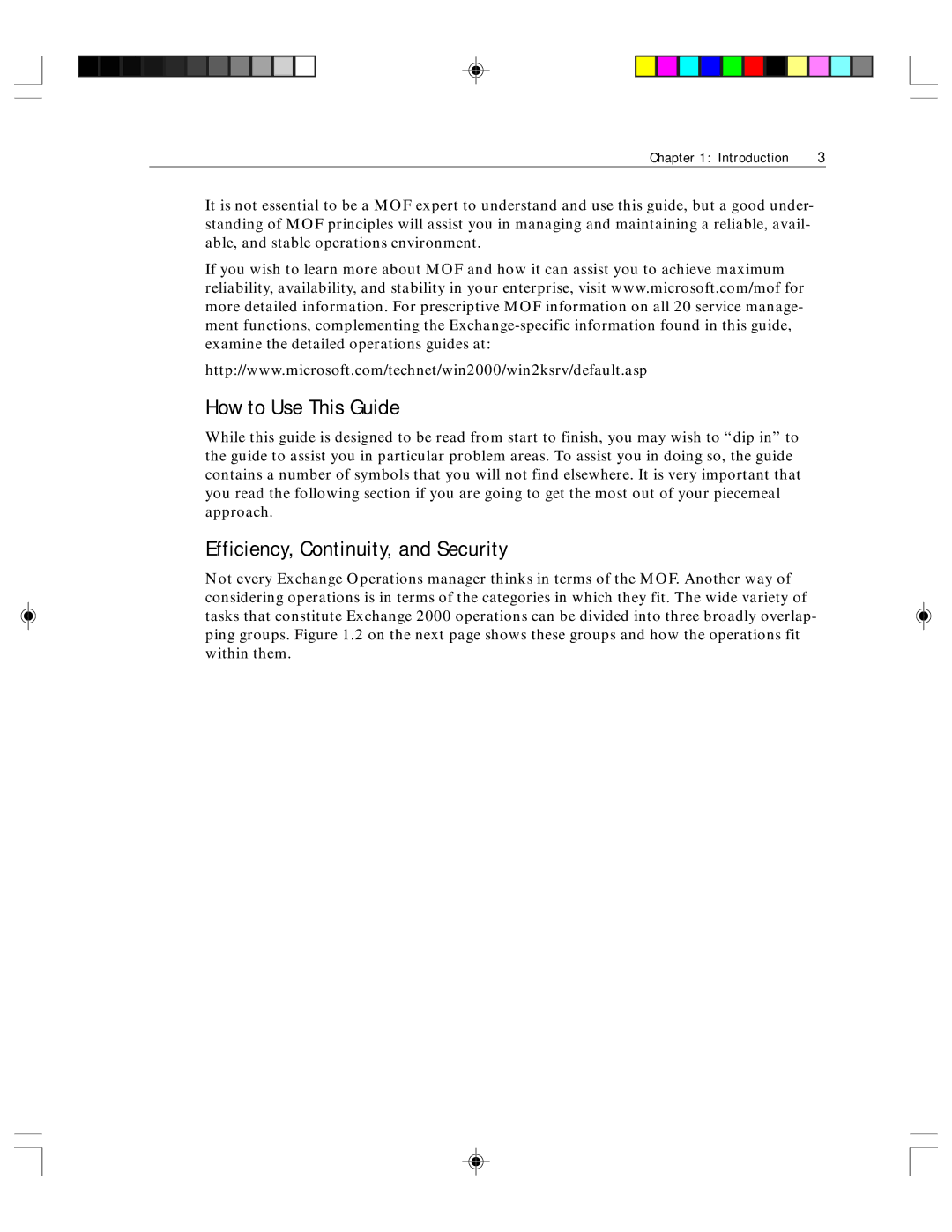
Chapter 1: Introduction | 3 |
It is not essential to be a MOF expert to understand and use this guide, but a good under- standing of MOF principles will assist you in managing and maintaining a reliable, avail- able, and stable operations environment.
If you wish to learn more about MOF and how it can assist you to achieve maximum reliability, availability, and stability in your enterprise, visit www.microsoft.com/mof for more detailed information. For prescriptive MOF information on all 20 service manage- ment functions, complementing the
http://www.microsoft.com/technet/win2000/win2ksrv/default.asp
How to Use This Guide
While this guide is designed to be read from start to finish, you may wish to “dip in” to the guide to assist you in particular problem areas. To assist you in doing so, the guide contains a number of symbols that you will not find elsewhere. It is very important that you read the following section if you are going to get the most out of your piecemeal approach.
Efficiency, Continuity, and Security
Not every Exchange Operations manager thinks in terms of the MOF. Another way of considering operations is in terms of the categories in which they fit. The wide variety of tasks that constitute Exchange 2000 operations can be divided into three broadly overlap- ping groups. Figure 1.2 on the next page shows these groups and how the operations fit within them.
